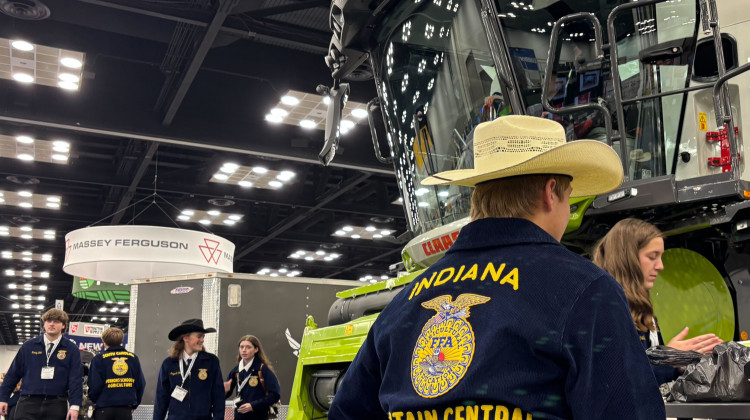
Indiana SUN Bucks, a new program that provides families with vouchers for food during the summer, aims to reduce food insecurity when kids are out of school during the summer months.
Jill Sheridan / WFYIThis summer, Indiana families with eligible, school-aged children will be able to get money for groceries from the new Indiana SUN Bucks program organized by the state and the U.S. Department of Agriculture. The new program comes after similar programs in recent years showed positive outcomes for children.
In past years, Indiana's Summer Food Service Program relied on school districts, community organizations and local government to distribute food to families.
Indiana Department of Education announced the new SUN Bucks program in April. Many eligible families will be automatically enrolled in the program and will receive a voucher in the mail for $120 per school-aged child. The voucher can be used to purchase food during the summer months.
“It's a more equitable and convenient way to support families because really, they have the ability to make the purchasing choices that they want at the grocery stores where they normally purchase the food that they know their kids will eat,” said Eleni Towns, associate director of the No Kid Hungry campaign.
Congress created a similar pandemic EBT program in 2020 to give families food vouchers when schools closed due to COVID-19. It was modeled after pilot programs that ran from 2011 to 2014.
A study that evaluated the PEBT program said it reduced the rate of children’s food hardship by 30 percent the week after funds were disbursed. The USDA said the program kept between 2 million to nearly 4 million kids from going hungry.
Towns said No Kid Hungry found 82 percent of families spend more on groceries during the summer.
“We have known for decades now that kids face increased hunger in the summer months when school meals end,” she said. “It's been challenging to address that need.”
Join the conversation and sign up for the Indiana Two-Way. Text "Indiana" to 765-275-1120. Your comments and questions in response to our weekly text help us find the answers you need on statewide issues and the election, including our project Civically, Indiana.
Towns said the new vouchers are especially helpful because families don’t have to travel to get them. They also let parents shop at their usual grocery stores.
When the USDA tested summer EBT programs between 2011 and 2014, studies showed that kids whose families received summer EBT vouchers ate more whole grains, dairy, fruit and vegetables, and drank less sugar-sweetened beverages.
Town said she expects to see similar results from the Indiana SUN Bucks program.
“If you are able to give additional dollars for families to spend at the grocery store, you're going to increase nutritional intake for kids. It's a really direct way to address food insecurity,” she said.
However, Town emphasized that SUN Bucks aren’t meant to be a complete fix for food insecurity – the voucher is $120 per school-aged child, for the entire summer.
“It's not comprehensive for our families’ needs for the summer months, but it is a supplement to help them fill in the gaps,” she said. “We know it will be really, really, really critical for families facing food insecurity or facing poverty.”
Towns said families eligible for SUN Bucks more than likely already receive assistance in some form.
Families are eligible for the SUN Bucks program if they receive assistance from the Supplemental Nutrition Assistance Program (SNAP), Temporary Assistance for Needy Families (TANF) or income-based Medicaid.
Children who are wards of the state, experiencing housing insecurity or migrants are also eligible for the program.
Still, Towns said there is help available for those who need more assistance. She encouraged people to visit the free meal finder on No Kid Hungry’s website. The USDA and the IDOE have similar free meal finders on their websites. More information on Indiana SUN Bucks is available on the Indiana Department of Education's website.
Kirsten is Indiana Public Broadcasting's education reporter. Contact her at kadair@wfyi.org or follow her on Twitter at @kirsten_adair.
9(MDAyMzk1MzA4MDE2MjY3OTY1MjM5ZDJjYQ000))
 DONATE
DONATE






 Support WFYI. We can't do it without you.
Support WFYI. We can't do it without you.